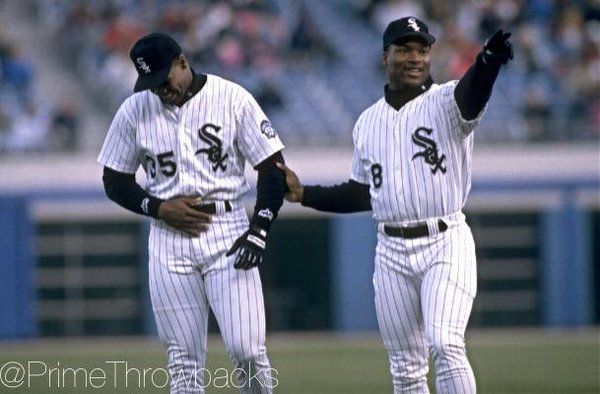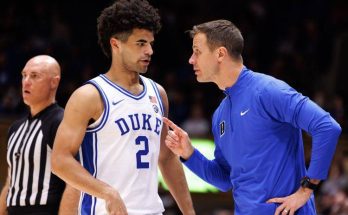Bo Jackson and Frank Thomas played together on the Chicago White Sox baseball team after being Auburn University football teammates. Both were exceptional athletes who were first enlisted to
Bo Jackson and Frank Thomas, two of the most gifted and iconic athletes in American sports history, share a unique and compelling connection that begins at Auburn University and extends into Major League Baseball with the Chicago White Sox. Their intertwined story is one of raw talent, relentless determination, and historical impact, unfolding across two of the most physically demanding sports—football and baseball. Though their professional paths diverged early on, fate brought them together once more on the South Side of Chicago, allowing them to suit up in the same dugout after years apart. This narrative—rich with physical triumph, moments of camaraderie, and mutual respect—underscores their exceptional abilities and the rare company they kept.
Bo Jackson was the prototype of the multi-sport athlete. Born in Bessemer, Alabama, in 1962, Jackson was a generational talent who stunned fans, coaches, and fellow athletes with his speed, power, and agility. At Auburn University, he was nothing short of legendary. He played both football and baseball at an elite level, becoming a Heisman Trophy winner in 1985 as a tailback and a feared slugger on the baseball diamond. His blend of athleticism was so rare that even after entering the NFL as the first overall pick in the 1986 draft by the Tampa Bay Buccaneers, Jackson refused to sign, eventually opting to play baseball with the Kansas City Royals instead. He later joined the NFL’s Los Angeles Raiders and famously played both professional sports simultaneously, becoming the only athlete ever named to both the MLB All-Star Game and the NFL Pro Bowl.
Frank Thomas, by contrast, was younger, born in 1968 in Columbus, Georgia, and followed Bo Jackson into Auburn’s athletic program. Thomas initially enrolled as a tight end for the football team, sharing the roster with Bo Jackson in the mid-1980s. However, while he showed potential on the football field, it was baseball where his skills truly began to shine. Unlike Jackson, whose athletic gifts allowed him to split time between two sports, Thomas committed himself fully to baseball early on, believing he had the greatest opportunity for longevity and success there. At Auburn, Thomas developed into a dominant power hitter with exceptional plate discipline, and by the time he was drafted seventh overall by the Chicago White Sox in 1989, it was clear he was destined for greatness.
Though Bo Jackson and Frank Thomas were both Auburn athletes and shared the field briefly during their college years, it wasn’t until Jackson’s return to baseball following a devastating hip injury that they would again wear the same uniform. In 1991, Jackson suffered a career-threatening hip dislocation while playing for the Raiders. Most assumed his professional athletic career was over, especially in football. After undergoing hip replacement surgery, Jackson mounted a remarkable comeback, signing with the Chicago White Sox in 1991. It was during this time that his path crossed once again with Frank Thomas, who had just started to emerge as the White Sox’s premier hitter.
Their reunion in Chicago was more than a nostalgic footnote; it was a convergence of two athletic marvels at very different points in their careers. For Jackson, it was a moment of redemption and resilience. His power at the plate remained formidable, even if his speed and mobility were diminished. For Thomas, it was the beginning of a legendary MLB career, one that would span over 18 seasons and result in over 500 home runs, two American League MVP awards, and a Hall of Fame induction in 2014.
Despite Jackson’s physical limitations, he contributed meaningfully to the White Sox. In 1993, the team made a deep playoff run, reaching the American League Championship Series. Although they ultimately fell to the eventual World Series champion Toronto Blue Jays, the season was an inspiring one. Bo Jackson, having returned from what many believed was a career-ending injury, hit 16 home runs and provided veteran leadership in the clubhouse. His comeback won him the American League Comeback Player of the Year award in 1993.
Frank Thomas, meanwhile, was ascending rapidly. By the time Jackson joined the team, Thomas was already laying claim to being one of the most dangerous hitters in baseball. His approach at the plate combined patience with explosive power. In 1993, he batted .317 with 41 home runs and 128 RBIs, numbers that earned him his first MVP award. He was a cornerstone of the franchise, the face of the team, and one of the most feared right-handed hitters of the era. Watching Jackson’s dedication and mental toughness during his comeback likely left a strong impression on Thomas, reinforcing the importance of perseverance and focus, even in the face of great adversity.
While they were not teammates for many seasons, their time together on the White Sox is significant because it represented a full-circle moment from their days at Auburn. Few athletes can claim to have played at a high level in two major sports, let alone alongside another superstar from college to the pros. Jackson and Thomas never took the field together in football after Auburn, but in Chicago, they stood shoulder to shoulder in the batter’s box, facing the best pitchers in the world. Their partnership symbolized the continuation of an era and highlighted the transition of sports into a new generation—one where sheer physical talent met a more analytical and specialized approach.
Though Jackson’s MLB career ended in 1994 and Thomas went on to play into the 2000s, their time as teammates offered a unique moment in sports history. For fans, it was a rare chance to see two transcendent talents share the same lineup, to witness the passing of the torch from one Auburn legend to another. The connection was not just about performance but about mutual respect and the shared experience of navigating elite sports as Black athletes from the South, rising to the top of their respective games.
In interviews, Thomas has often spoken respectfully of Jackson’s influence, crediting him for setting a standard at Auburn that he himself aspired to reach. Jackson, in turn, has praised Thomas’s discipline and work ethic, qualities that helped Thomas achieve longevity and consistency that Jackson was tragically denied by injury. Their relationship was never one of rivalry but of mutual admiration, shaped by shared experiences, overlapping legacies, and an understanding of what it took to stand out in hyper-competitive environments.
Off the field, both athletes have continued to inspire. Jackson has become a motivational speaker and businessman, while Thomas has worked in broadcasting and remained involved with Major League Baseball. Each has built a legacy that transcends sports, yet their brief time as teammates in Chicago remains one of the more intriguing chapters in their respective journeys.
Their story is also a reflection of how sport can act as a unifying force. Jackson, once the ultimate dual-sport star, and Thomas, the single-minded slugger, both reached elite status in different ways. Yet in Chicago, their narratives briefly aligned—former Auburn Tigers now White Sox teammates, each bringing their own brand of greatness. Fans at Comiskey Park during those early 1990s seasons witnessed not just the feats of individual excellence, but the intersection of two stories written years apart and brought together again through fate and determination.
There’s a poetic symmetry to it all. In the 1980s, Bo Jackson was the headline, the mythic figure whose feats on the gridiron and baseball diamond captivated the nation. In the 1990s and early 2000s, it was Frank Thomas who carried the torch, a colossus of the batter’s box whose stats and longevity made him one of the best hitters in the game’s history. Their shared time on the White Sox was brief, but it bridged two eras of athletic brilliance and reminded fans what greatness looks like in different forms.
Bo Jackson and Frank Thomas are reminders that athletic excellence comes in many shapes, timelines, and trajectories. One reached his peak in a burst of dual-sport dominance, cut short by injury. The other built his legacy slowly and steadily, with consistent power and discipline. Yet both were elite competitors, teammates, and representatives of a unique lineage that started at Auburn University and found its way, through determination and destiny, to the Chicago White Sox.


